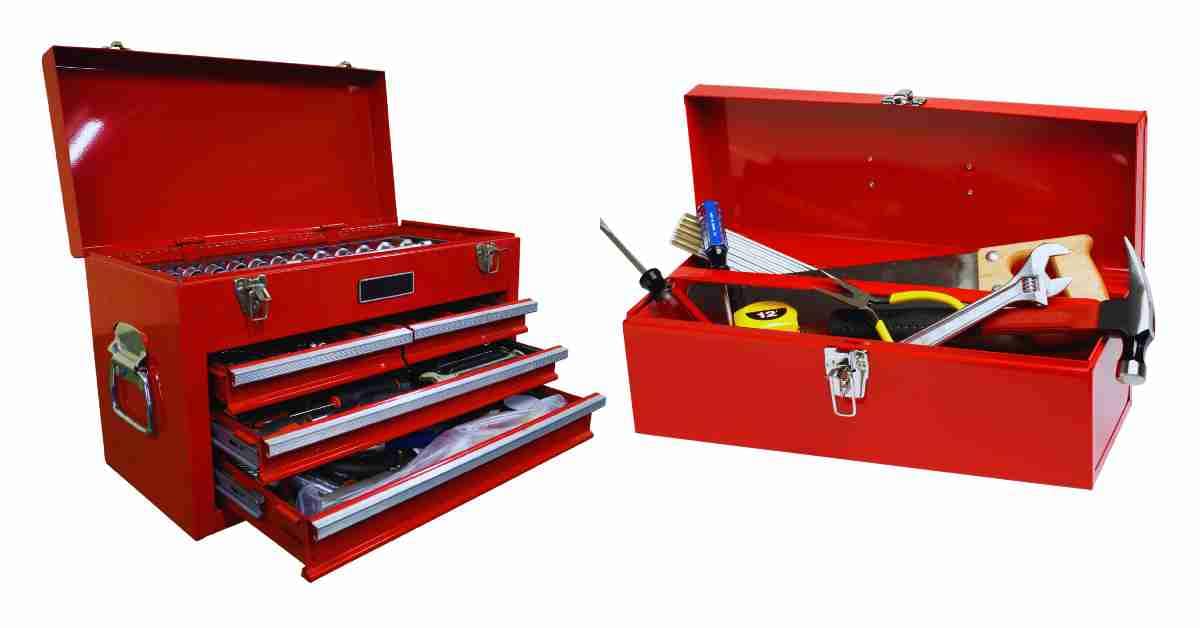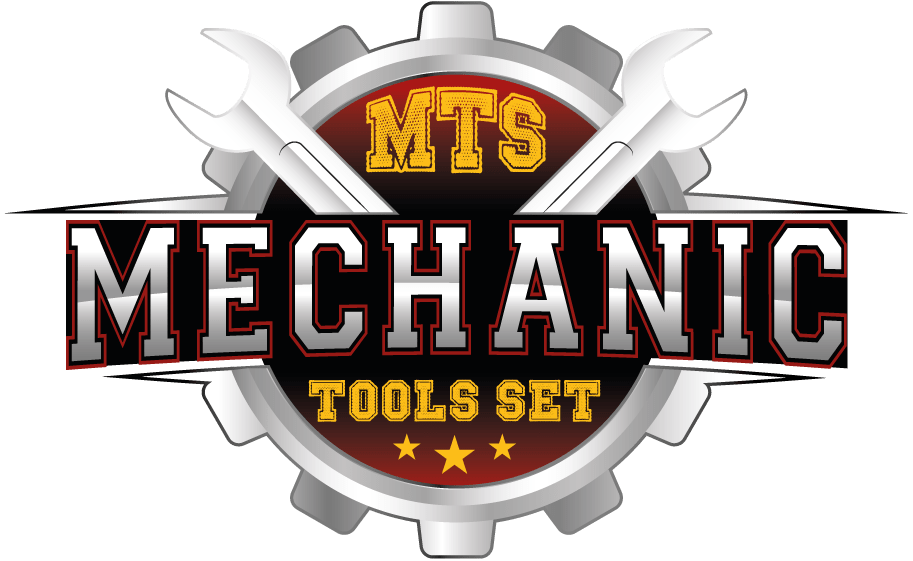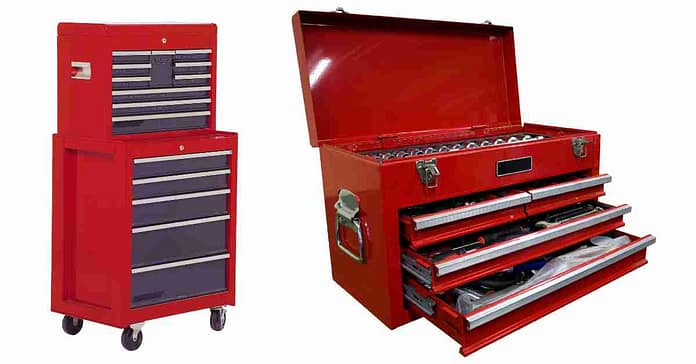A mechanics tool chest with tools is essential for organized and efficient repair work. It ensures easy access to necessary tools.
A well-equipped mechanics tool chest offers numerous advantages. It keeps tools organized, making them easy to find and reducing time wasted searching. This organization boosts productivity and efficiency in repair tasks. High-quality tool chests are durable and secure, protecting valuable tools from damage and theft.
They come in various sizes and styles to fit different needs and budgets. Investing in a good tool chest can save money over time by preserving tools’ condition and extending their lifespan. A mechanics tool chest with tools is a smart investment for both professionals and DIY enthusiasts.
Introduction
A mechanics tool chest is a must-have for any serious mechanic. It provides storage and organization for all tools. This makes work easier and more efficient.
Importance Of A Tool Chest
A tool chest keeps all tools in one place. This saves time and effort. No more searching for that lost screwdriver! A well-organized tool chest also extends the life of your tools. Proper storage prevents damage and rust.
- Saves time
- Protects tools
- Keeps workspace tidy
Types Of Tool Chests
There are several types of tool chests to choose from. Each type offers different benefits.
| Type | Features |
|---|---|
| Portable Tool Chest | Easy to carry, small size, good for mobile work. |
| Rolling Tool Chest | Wheels for movement, larger size, more storage. |
| Stationary Tool Chest | Fixed location, very large, maximum storage. |
Choose the right tool chest based on your needs. If you move around a lot, a portable tool chest might be best. For a garage setup, a rolling tool chest or a stationary tool chest could be ideal.
Essential Tools For Mechanics
Having the right tools is crucial for any mechanic. A well-equipped tool chest can make a big difference. It ensures efficiency and saves time. Let’s explore the essential tools every mechanic needs.
Hand Tools
Hand tools are the backbone of any mechanic’s toolkit. They are versatile and reliable. Here are some must-have hand tools:
- Wrenches: Essential for tightening and loosening nuts and bolts.
- Screwdrivers: Needed for various screws in different sizes and shapes.
- Pliers: Ideal for gripping, bending, and cutting wires.
- Hammers: Useful for striking and shaping materials.
- Socket Sets: Great for fast and easy bolt removal and installation.
These tools are a must in every mechanic’s tool chest. They handle most basic tasks efficiently.
Power Tools
Power tools provide extra strength and speed. They make tough jobs easier. Here are some essential power tools:
- Impact Wrench: Perfect for removing stubborn bolts quickly.
- Drill: Useful for drilling holes and driving screws.
- Angle Grinder: Ideal for cutting, grinding, and polishing materials.
- Air Compressor: Powers various pneumatic tools and inflates tires.
- Electric Ratchet: Speeds up the process of tightening and loosening bolts.
Power tools enhance productivity. They make complex tasks much simpler and quicker.
Organizing Your Tool Chest

Keeping your mechanics tool chest organized is crucial. It helps you find tools quickly and work efficiently. An organized tool chest also extends the lifespan of your tools.
Tool Chest Layout
The layout of your tool chest matters a lot. A well-planned layout saves time and reduces frustration. Start by grouping similar tools together. For example, put all screwdrivers in one drawer.
Consider the frequency of tool usage. Place frequently used tools at the top. This minimizes the need to bend or stretch. For larger tools, allocate a specific section.
Labeling And Sorting
Labeling is a simple yet powerful way to stay organized. Use clear labels for each drawer. Labeling helps you find what you need quickly.
Sorting tools by type and size is also helpful. Use dividers to keep tools separated. This prevents tools from getting mixed up.
Below is a simple table to illustrate sorting:
| Drawer | Tools |
|---|---|
| Top Drawer | Screwdrivers, Pliers |
| Middle Drawer | Wrenches, Sockets |
| Bottom Drawer | Hammers, Mallets |
Here are some tips for effective labeling and sorting:
- Use color-coded labels for quick identification.
- Invest in drawer liners to keep tools in place.
- Regularly review and update your organization system.
Organizing your tool chest may take some time initially. But it pays off in the long run. A well-organized tool chest makes any job easier and more enjoyable.
Choosing The Right Tool Chest
Choosing the right tool chest can make or break your project. A good tool chest keeps your tools organized and safe. It also saves you time and hassle. But with so many options, how do you choose the best one? Here are some tips to help you make the right choice.
Material And Durability
The material of a tool chest affects its durability. Steel is a popular choice because it is strong and durable. It can handle heavy tools without bending or breaking. Aluminum is another option. It is lighter than steel but still very strong. Plastic tool chests are lightweight and resistant to rust. But they may not be as durable as metal ones.
A table can help you compare the materials:
| Material | Durability | Weight |
|---|---|---|
| Steel | High | Heavy |
| Aluminum | Medium | Light |
| Plastic | Low | Very Light |
Size And Portability
The size of your tool chest depends on your needs. Large tool chests are great for workshops. They can hold many tools and keep them organized. Smaller tool chests are better for jobs on the go. They are easier to carry and fit in tight spaces.
Consider these points when choosing size and portability:
- How many tools do you have?
- Do you need to move your tool chest often?
- Do you have space to store a large chest?
Some tool chests come with wheels. This makes them easy to move around. Others have handles for easy carrying. Choose one that fits your mobility needs.
Choosing the right tool chest is essential for any project. Consider material, durability, size, and portability. This will help you find the perfect tool chest for your needs.
Maintaining Your Tools
Proper maintenance is key to extending the lifespan of your tool chest with tools. Regular care keeps your tools efficient and safe. Below are some essential tips to keep your tools in top condition.
Cleaning Tips
Clean your tools after each use to prevent rust and wear. Use a dry cloth to wipe off dirt and grease. For stubborn grime, use a mild detergent and water. Dry thoroughly to avoid moisture damage.
- Wipe tools with a dry cloth
- Use mild detergent for stubborn dirt
- Dry tools completely after cleaning
Regular Inspections
Check your tools frequently for signs of wear and damage. Look for cracks, rust, and dull edges. Replace or repair damaged tools immediately to maintain safety and efficiency.
| Inspection Task | Frequency |
|---|---|
| Check for cracks | Weekly |
| Inspect for rust | Monthly |
| Sharpen dull edges | Quarterly |
Top Brands For Tool Chests
Choosing the right tool chest is crucial for every mechanic. Top brands ensure durability and functionality. They offer a variety of features and styles.
Popular Brands
Some brands stand out due to their quality and reliability. Here are a few:
- Snap-On: Known for its premium quality and durability.
- Craftsman: Offers a wide range of affordable options.
- Husky: Provides sturdy and spacious tool chests.
- Matco Tools: Popular for its innovative designs and features.
- Milwaukee: Renowned for its heavy-duty and robust tool chests.
Budget Vs. Premium
Choosing between budget and premium tool chests depends on your needs and budget.
| Category | Budget Tool Chests | Premium Tool Chests |
|---|---|---|
| Price | More affordable, under $500 | Higher price, over $500 |
| Material | Basic metal or plastic | High-grade steel or aluminum |
| Features | Basic storage, minimal drawers | Advanced features, many drawers |
| Durability | Good for light use | Excellent for heavy use |
Premium tool chests offer more features and better materials. Budget options are suitable for beginners and light use. Premium chests are ideal for professionals who need durability and additional features.
Customizing Your Tool Chest
Crafting a unique tool chest can greatly improve your work efficiency. Customization allows you to tailor your tool chest to fit your specific needs. This ensures that every tool is within reach and organized. Here are some ways to customize your tool chest.
Adding Extra Drawers
Adding extra drawers to your tool chest can maximize your storage space. This helps in organizing tools by type or size. You can find modular drawer units that fit your chest. Some units come with dividers for better organization.
| Drawer Type | Best For |
|---|---|
| Shallow Drawers | Small hand tools |
| Deep Drawers | Power tools |
| Modular Units | Custom configurations |
Personalizing Your Setup
Personalizing your setup can make your tool chest unique. Consider labeling drawers to easily identify contents. You can use stickers or a label maker. Another option is to use foam inserts to keep tools in place. Foam inserts can be cut to fit specific tools.
- Label your drawers
- Use foam inserts
- Add hooks for hanging tools
Consider adding a pegboard to the inside of the lid. This can store frequently used tools. Adding a magnetic strip can also be useful for small metal tools.
Safety Tips For Using Tools
Using a mechanics tool chest with tools can be exciting. But safety should always come first. Here are some essential safety tips to keep in mind. These tips will help you use your tools properly and safely.
Proper Tool Usage
Using tools correctly is crucial. Always follow the instructions provided by the manufacturer. Here are some key points to remember:
- Read the manual: Understand how to use each tool before starting.
- Inspect tools: Check for any damage before use.
- Use the right tool: Always use the appropriate tool for the job.
- Maintain tools: Keep your tools clean and well-maintained.
Protective Gear
Wearing the right protective gear can prevent injuries. Here is a list of essential gear:
| Gear | Purpose |
|---|---|
| Safety Glasses | Protects your eyes from debris. |
| Gloves | Protects your hands from sharp edges and heat. |
| Ear Protection | Protects your ears from loud noises. |
| Steel-toe Boots | Protects your feet from heavy objects. |
Always ensure your protective gear fits well and is in good condition.
Following these safety tips ensures a safer and more enjoyable experience with your mechanics tool chest. Stay safe and work smart!
Upgrading Your Tool Collection
Is your tool collection outdated? Upgrade to a new mechanics tool chest. Discover the latest tools. Get more done with less effort. Find out what you need to know.
New Technologies
New technologies make tools more powerful and efficient. Digital torque wrenches are precise. They display the exact force applied. Cordless tools offer freedom to move. No more tangled cords. LED lights on tools help you see better in low light.
Consider these new tech tools:
- Digital Torque Wrenches
- Cordless Power Tools
- LED-Enhanced Tools
- Smart Tool Chests with Inventory Tracking
Specialized Tools
Specialized tools are designed for specific tasks. They make hard jobs easy. A brake caliper tool set is great for brake repairs. An engine timing tool kit is essential for engine work. A quality multimeter helps with electrical tasks. These tools save time and increase accuracy.
Here are some specialized tools to consider:
- Brake Caliper Tool Set
- Engine Timing Tool Kit
- High-Quality Multimeter
- Precision Screwdrivers
| Tool | Purpose |
|---|---|
| Digital Torque Wrench | Apply precise force |
| Brake Caliper Tool Set | Brake repairs |
| Engine Timing Tool Kit | Engine work |
| High-Quality Multimeter | Electrical tasks |
Frequently Asked Questions
What Tools Are In A Tool Chest?
A tool chest typically contains wrenches, screwdrivers, pliers, hammers, tape measures, sockets, and utility knives. Specialized compartments may hold drills, bits, and fasteners.
How Do You Store Tools Without A Tool Chest?
Store tools on wall-mounted pegboards, in labeled bins, on shelves, or in portable tool bags. Use magnetic strips for metal tools.
How Do You Organize A Tool Chest?
Organize a tool chest by grouping similar tools together. Use foam inserts or dividers for easy access. Label each section clearly. Place frequently used tools in top drawers. Keep heavy tools at the bottom for stability. Regularly clean and maintain the chest to ensure efficiency.
What Is In A Mechanics Tool Box?
A mechanic’s toolbox contains wrenches, screwdrivers, pliers, sockets, ratchets, hammers, and measuring tools. It also includes specialty tools like torque wrenches and diagnostic devices.
Conclusion
A mechanics tool chest with tools is essential for any workshop. It ensures organization and efficiency. Investing in a quality tool chest saves time and protects your tools. Make your work easier and more productive with the right tool chest.
Explore options and find the perfect fit for your needs.

